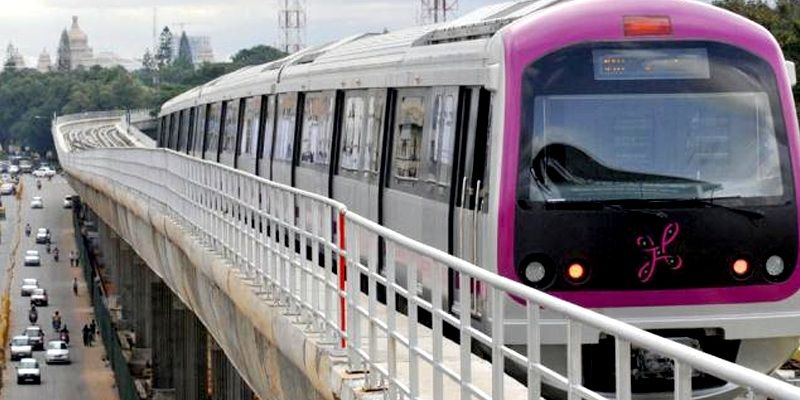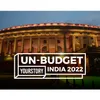Finance Minister Nirmala Sitharaman’s Union Budget speech on Monday balanced urbanisation and infrastructure modernisation with the need for sustainability.
Such a roadmap is vital in the era of ESG (environment, social, and governance), and the 2022-23 Budget might well prove to be prescient for a balanced socio-economic framework.
Let’s begin with the numbers on the sustainability front.
Among the outlay on major schemes,
- There is a nearly four times increase in the 2022-23 budgetary estimate for FAME India (Faster Adoption and Manufacturing of Hybrid and Electric Vehicles in India). It stands at Rs 2,908 crore, compared to Rs 757 crore in the 2021-22 FAME India outlay.
- Schemes for solar power (grid) and wind power grid have budgetary estimates of Rs 3,304 crore and Rs 1,050 crore respectively in 2022-23.
- Further, Sitharaman has made an allocation of Rs 19,500 crore for production-linked incentive of high efficiency solar photovoltaic modules to encourage domestic manufacturing, as India seeks to install 280 gigawatts (GW) of solar capacity by 2030.
“India’s strategy opens up huge employment opportunities and will take the country on a sustainable development path,” Sitharaman said, adding that the budget proposes near-term and long-term actions in accordance with the strategy.
For example, large commercial buildings will have to measure energy efficiency and savings through the Energy Service Company (ESCO) model, she said. “It will facilitate capacity building and awareness for energy audits, performance contracts, and common measurement and verification protocol.”
Action plans are ready, she said, for the transition to a circular economy, which will be characterised by productivity enhancement as well as creating large opportunities for new businesses and jobs.
This entails plans for dealing with electronic waste, end-of-life vehicles, used oil waste, and toxic and hazardous industrial waste.
“The focus will be on addressing important cross-cutting issues of infrastructure, reverse logistics, technology upgradation and integration with the informal sector,” Sitharaman said in her Budget Speech.

“This will be supported by active public policies covering regulations, extended producers’ responsibilities framework and innovation facilitation,” she added.
What is remarkable is that the sustainability goals are concentric on the goals of modernising mobility and infrastructure. Or PM Gati Shakti.
Again, let’s look at the numbers first.
- The Urban Rejuvenation Mission: AMRUT and Smart Cities Mission had a revised estimate in 2021-22 of Rs 13,900 crore (the Budget Estimate for that was Rs 13,750 crore).
- The budgetary estimate for the Urban Rejuvenation Mission for 2022-23 is Rs 14,100 crore.
- The 2022-23 budget estimate for METRO projects is Rs 19,130 crore, compared to the revised estimate of Rs 18,978 crore in 2021-22.
Sitharaman reiterated that mass urban transport, including connectivity to railways, is imperative.
“Multimodal connectivity between mass urban transport and railway stations will be facilitated on priority. Design of metro systems, including civil structures, will be reoriented and standardised for Indian conditions and needs,” she explained.
“The (PM GatiShakti) approach is driven by seven engines, namely roads, railways, airports, ports, mass transport, waterways, and logistics infrastructure,” she said, at the beginning of the Budget Speech.
And as a part of the government’s overall market borrowings in 2022-23, sovereign green bonds will be issued for mobilising resources for green infrastructure, Sitharaman said. “The proceeds will be deployed in public sector projects which help in reducing the carbon intensity of the economy.”
The sustainable development framework is designed for growth to take place simultaneously across geographic regions, as opposed to linear growth in 10-odd cities.
That’s the essence of India’s roadmap for the next 25 years.
Edited by Saheli Sen Gupta

![You are currently viewing [Budget 2022] Nirmala Sitharaman's framework balances modernising infrastructure with sustainability](https://blog.digitalsevaa.com/wp-content/uploads/2022/02/union-budget-2022-nirmala-sitharaman-framework-balances-modernisingptcevpvb2.gif; charset=utf-8)


![Read more about the article [Weekly funding roundup] Venture investments continue to remain lacklustre; Indian startups raise $113M](https://blog.digitalsevaa.com/wp-content/uploads/2021/02/Weeklyimage-1577460362436-300x150.png)






